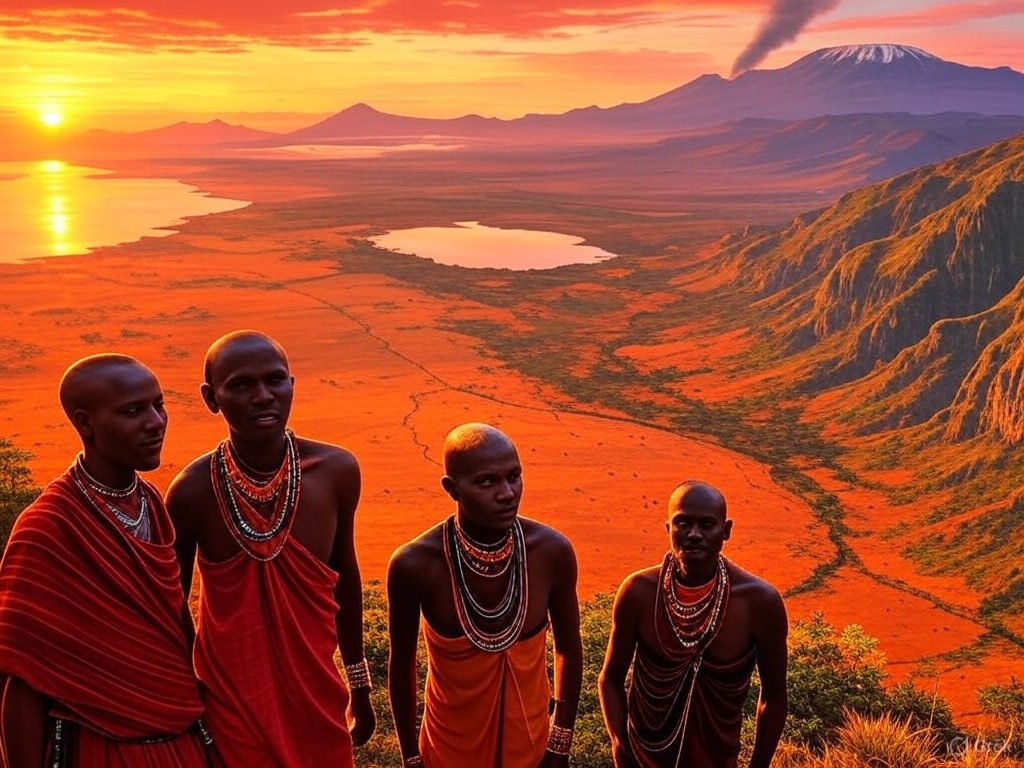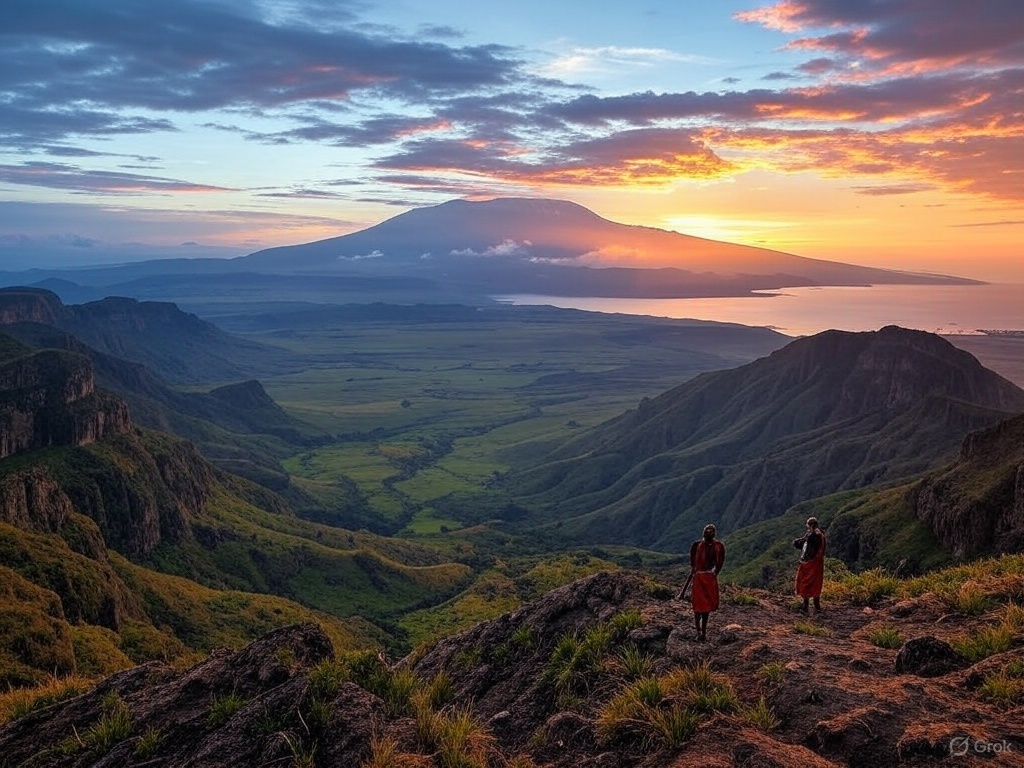Exploring the Wonders of the Great Rift Valley: A Geological and Cultural Marvel
Nestled in the heart of East Africa, stretching from the Middle East to Mozambique, the Great Rift Valley is one of the most awe-inspiring natural wonders on Earth. Spanning over 6,000 kilometers, this massive geological formation is a testament to the planet’s dynamic history and a vibrant hub of biodiversity, culture, and human evolution. Whether you’re a nature enthusiast, a history buff, or an adventure seeker, the Rift Valley offers a journey like no other. Here are 10 fascinating facts about this remarkable region that will inspire you to explore its depths.
1. A Geological Masterpiece
The Great Rift Valley was formed around 35 million years ago when tectonic plates began pulling apart, creating a massive rift in the Earth’s crust. This ongoing process is slowly splitting the African continent, with dramatic escarpments, deep valleys, and volcanic landscapes defining the region. Stretching 30 to 100 kilometers wide in some areas, the valley is a living laboratory of geological activity, with frequent earthquakes reminding us of its dynamic nature.

Exploring the Wonders of the Great Rift Valley: A Geological and Cultural Marvel
2. A Chain of Stunning Lakes
The Rift Valley is home to some of Africa’s most iconic lakes, each with its own unique charm. Lake Tanganyika, one of the deepest lakes in the world, teems with colorful cichlid fish found nowhere else. Lake Malawi, another biodiversity hotspot, is a UNESCO World Heritage Site, while Lake Victoria, Africa’s largest lake by area, supports millions of livelihoods. These lakes are not just scenic—they’re vital ecosystems and economic lifelines.
3. Volcanic Wonders
The Rift Valley is a hotspot for volcanic activity, boasting giants like Mount Kilimanjaro, Africa’s highest peak, and Mount Kenya, a trekker’s paradise. Active volcanoes and geothermal hot springs dot the landscape, creating surreal vistas and opportunities for adventure. The region’s volcanic soils also make it incredibly fertile, supporting lush agriculture.
4. A Biodiversity Hotspot
From flamingo-filled soda lakes to savannas teeming with rhinos, elephants, and big cats, the Rift Valley is a haven for wildlife. Its diverse ecosystems, ranging from wetlands to highlands, support countless species, many of which are endemic. The lakes alone are home to hundreds of unique fish species, making the valley a dream destination for ecologists and nature lovers.
5. The Cradle of Humankind
The Rift Valley holds a special place in human history. Often called the “Cradle of Humankind,” it has yielded some of the most significant fossil discoveries, including early hominid remains in Tanzania’s Olduvai Gorge. Sites like these offer a glimpse into our evolutionary past, making the valley a must-visit for anyone interested in anthropology.
6. A Tapestry of Cultures
The Rift Valley is as rich in culture as it is in natural beauty. It is home to diverse ethnic groups, including the Maasai, whose iconic red robes and pastoral lifestyle are emblematic of the region. Their traditions, along with those of other communities, are deeply intertwined with the valley’s landscapes, offering visitors a chance to experience authentic African heritage.
7. A Hub for Adventure
Whether it’s hiking volcanic peaks, exploring ancient fossil sites, or embarking on a safari, the Rift Valley is an adventurer’s playground. The region’s national parks, such as Serengeti and Ngorongoro in Tanzania, offer unparalleled wildlife experiences, while its lakes and rivers are perfect for fishing, boating, and birdwatching.
8. Economic Backbone
The Rift Valley is not just a natural wonder—it’s an economic powerhouse. Its fertile soils support thriving agriculture, from coffee plantations to flower farms. Tourism is another major driver, with millions flocking to witness the valley’s scenic beauty and wildlife. Fishing in the lakes also sustains countless communities, making the region a vital part of East Africa’s economy.
9. A Window into Earth’s Future
The Rift Valley is still evolving. Geologists predict that, millions of years from now, the African continent could fully split, creating a new ocean basin. For now, the valley’s seismic activity and geothermal features offer a fascinating glimpse into the Earth’s restless nature, captivating scientists and visitors alike.
10. A Call to Conservation
With its rich biodiversity and cultural heritage, the Rift Valley faces challenges like habitat loss and climate change. Conservation efforts are critical to preserving this unique region for future generations. By visiting responsibly and supporting local initiatives, travelers can help protect this irreplaceable treasure.
Why Visit the Great Rift Valley?
The Great Rift Valley is more than a destination—it’s a journey through time, nature, and human history. From its towering volcanoes to its ancient fossil beds, every corner of the valley tells a story. Whether you’re marveling at a flamingo-filled lake, hiking a rugged escarpment, or learning about early humans, the Rift Valley will leave you in awe of our planet’s beauty and complexity.
So, pack your bags and set out to explore the Great Rift Valley. It’s a place where the Earth’s past, present, and future collide, offering an adventure that’s as educational as it is exhilarating. Have you visited the Rift Valley or dreamed of exploring it? Share your thoughts in the comments below, and let’s inspire each other to discover this incredible region!
Featured Posts
- SHA: Emergency Evacuation and International Referrals – Access to Critical Care

- SHA: Dental and Optical Benefits – Caring for Your Smile and Vision

- SHA: Maternity Coverage – Comprehensive Care for Growing Families

- SHA: Outpatient Benefits Decoded – Your Day-to-Day Medical Coverage

- SHA: Inside Your Inpatient Coverage – Hospital Care Benefits Explained

- SHA: Your Benefits Breakdown – What Every Teacher Gets Based on Job Group

- TSC Unveils Comprehensive Medical Cover for All Teachers Starting December 2025

- Tragedy Strikes KJSEA Marking Exercise as Examiner Dies at Machakos Girls High School
- Shadows of Empire: How the West Maintains Control in Africa

- Why Senator Okiya Omtatah Wants to Abolish the Bomas National Tallying Centre (And Why It Matters for 2027)

- What to Study Now for a Successful Career in Kenya’s Future (2026-2050)

- AUDIT SHOCK: Only 3,000 Schools Get Capitation Funds as Govt Cracks Down on “Ghost Students”

- TSC’s Promotion Blueprint: How Teachers Earn Their Next Grade

- Updates for KPSEA & KJSEA 2025 Candidates and Heads of Institutions

- TSC CAREER OPPORTUNITIES: Deputy Director & Assistant Director Positions



